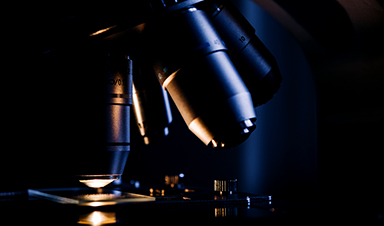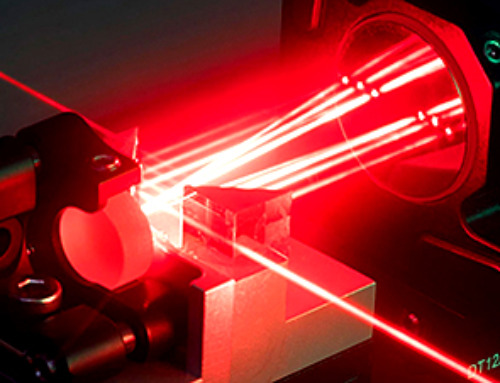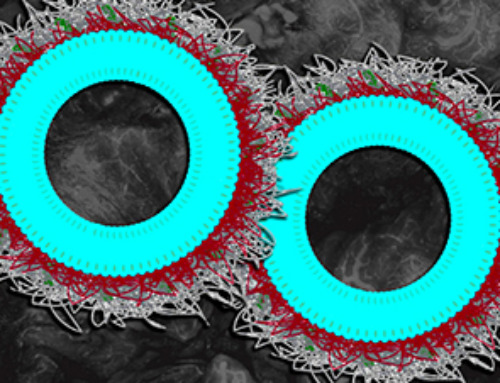Researchers led by the University at Buffalo (UB) have devised a new method that could enhance the effectiveness of vaccines against the novel coronavirus, the virus that is responsible for causing COVID-19.
Jonathan F. Lovell, PhD, an associate professor in the Department of Biomedical Engineering at UB, is the principal investigator of the study titled “SARS-CoV-2 RBD Neutralizing Antibody Induction is Enhanced by Particulate Vaccination,” published online in the Advanced Materials journal on October 28th, 2020.
COVID-19 has resulted in an uncontrollable global pandemic, which has infected a minimum of 40 million people around the world and resulted in over 220,000 deaths in the United States alone. As the disease started spreading in early 2020, biomedical researchers have been working actively to develop an effective vaccine.
Lovell thinks that one solution could be to develop vaccines that partly imitate the virus structure. One of the proteins on the virus—situated on the characteristic COVID spike—includes a component known as the receptor-binding domain, or RBD, which is its “Achilles heel.” Lovell stated that antibodies against this part of the virus have the ability to neutralize the virus.
It would be appealing if a vaccine could induce high-levels of antibodies against the RBD. One way to achieve this goal is to use the RBD protein itself as an antigen, that is, the component of the vaccine that the immune response will be directed against.
Jonathan F. Lovell, Associate Professor, Department of Biomedical Engineering, University at Buffalo
The researchers speculated that if the RBD is transformed into a nanoparticle (similar in size to the virus itself) rather than retaining it in its natural form as a tiny protein, it would produce higher levels of neutralizing antibodies and its potential to produce an immune response would increase.
Earlier, Lovell’s group had designed a technology that enables the simple transformation of small, purified proteins into particles by using liposomes, or small nanoparticles developed from naturally occurring fatty components.
In the latest study, the team added a unique lipid known as cobalt-porphyrin-phospholipid or CoPoP inside the liposomes.
Image Credit: Facility for Electron Microscopy Research (FEMR) at McGill University.
Post by Amanda Scott, NA CEO. Follow her on twitter @tantriclens
Thanks to Heinz V. Hoenen. Follow him on twitter: @HeinzVHoenen
News
GLP-1 Drugs Like Ozempic Work, but New Research Reveals a Major Catch
Three new Cochrane reviews find evidence that GLP-1 drugs lead to clinically meaningful weight loss, though industry-funded studies raise concerns. Three new reviews from Cochrane have found that GLP-1 medications can lead to significant [...]
How a Palm-Sized Laser Could Change Medicine and Manufacturing
Researchers have developed an innovative and versatile system designed for a new generation of short-pulse lasers. Lasers that produce extremely short bursts of light are known for their remarkable precision, making them indispensable tools [...]
New nanoparticles stimulate the immune system to attack ovarian tumors
Cancer immunotherapy, which uses drugs that stimulate the body’s immune cells to attack tumors, is a promising approach to treating many types of cancer. However, it doesn’t work well for some tumors, including ovarian [...]
New Drug Kills Cancer 20,000x More Effectively With No Detectable Side Effects
By restructuring a common chemotherapy drug, scientists increased its potency by 20,000 times. In a significant step forward for cancer therapy, researchers at Northwestern University have redesigned the molecular structure of a well-known chemotherapy drug, greatly [...]
Lipid nanoparticles discovered that can deliver mRNA directly into heart muscle cells
Cardiovascular disease continues to be the leading cause of death worldwide. But advances in heart-failure therapeutics have stalled, largely due to the difficulty of delivering treatments at the cellular level. Now, a UC Berkeley-led [...]
The basic mechanisms of visual attention emerged over 500 million years ago, study suggests
The brain does not need its sophisticated cortex to interpret the visual world. A new study published in PLOS Biology demonstrates that a much older structure, the superior colliculus, contains the necessary circuitry to perform the [...]
AI Is Overheating. This New Technology Could Be the Fix
Engineers have developed a passive evaporative cooling membrane that dramatically improves heat removal for electronics and data centers Engineers at the University of California San Diego have created an innovative cooling system designed to greatly enhance [...]
New nanomedicine wipes out leukemia in animal study
In a promising advance for cancer treatment, Northwestern University scientists have re-engineered the molecular structure of a common chemotherapy drug, making it dramatically more soluble and effective and less toxic. In the new study, [...]
Mystery Solved: Scientists Find Cause for Unexplained, Deadly Diseases
A study reveals that a protein called RPA is essential for maintaining chromosome stability by stimulating telomerase. New findings from the University of Wisconsin-Madison suggest that problems with a key protein that helps preserve chromosome stability [...]
Nanotech Blocks Infection and Speed Up Chronic Wound Recovery
A new nanotech-based formulation using quercetin and omega-3 fatty acids shows promise in halting bacterial biofilms and boosting skin cell repair. Scientists have developed a nanotechnology-based treatment to fight bacterial biofilms in wound infections. The [...]
Researchers propose five key questions for effective adoption of AI in clinical practice
While Artificial Intelligence (AI) can be a powerful tool that physicians can use to help diagnose their patients and has great potential to improve accuracy, efficiency and patient safety, it has its drawbacks. It [...]
Advancements and clinical translation of intelligent nanodrugs for breast cancer treatment
A comprehensive review in "Biofunct. Mater." meticulously details the most recent advancements and clinical translation of intelligent nanodrugs for breast cancer treatment. This paper presents an exhaustive overview of subtype-specific nanostrategies, the clinical benefits [...]
It’s Not “All in Your Head”: Scientists Develop Revolutionary Blood Test for Chronic Fatigue Syndrome
A 96% accurate blood test for ME/CFS could transform diagnosis and pave the way for future long COVID detection. Researchers from the University of East Anglia and Oxford Biodynamics have created a highly accurate [...]
How Far Can the Body Go? Scientists Find the Ultimate Limit of Human Endurance
Even the most elite endurance athletes can’t outrun biology. A new study finds that humans hit a metabolic ceiling at about 2.5 times their resting energy burn. When ultra-runners take on races that last [...]
World’s Rivers “Overdosing” on Human Antibiotics, Study Finds
Researchers estimate that approximately 8,500 tons of antibiotics enter river systems each year after passing through the human body and wastewater treatment processes. Rivers spanning millions of kilometers across the globe are contaminated with [...]
Yale Scientists Solve a Century-Old Brain Wave Mystery
Yale scientists traced gamma brain waves to thalamus-cortex interactions. The discovery could reveal how brain rhythms shape perception and disease. For more than a century, scientists have observed rhythmic waves of synchronized neuronal activity [...]





















